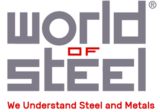Steel Exchanges
A promised potential that has never quite taken off. In 2000 it seemed steel would turn virtual but the dot com bust made a reality check. Since then there have been several efforts to revive some of these ideas and a few with a possible success.
We have not been able to take a firm position. It sure sounds doable and great on paper and even when programmed. It may have benefits to even out the volatility in steel. It may make steel trading more efficient.
The downside seems as negative and daunting.
There is a reluctance on the part of Steel Mills to use the steel exchange and to outsource their years of insight to another entity. There is concern about governance and neutrality of the steel exchanges and buy-in from the community at large. And how deep do you eliminate intermediaries. Some maybe actually adding value to the steel. Others through financing and the justification could go on. And when the market turns negative where do you transfer your pain (it could be called “share” when there is an existing relationship).
Steel itself is complex. It may be possible to have bench mark price for commercial grade Hot Rolled coils but what about other grades, the quantity, the financing and despite the strides made in quality, there is always a little premium on past relationships, quality controls at the mills and just the unquantifiable psychological peace of mind.
Sure education and seminars are being undertaken by steel exchanges. And some steel in some places is moving on to the steel exchanges.The technology is there and it keeps improving. It will probably be the commercial grades and the commodity items like billets and Hot Rolled. But there will be reluctance on the part of the mills and buyers to move higher grades and value added products to steel exchanges.
There is increasing cross collaboration between the steel maker and steel user and this can only happen on the shop floor or with intensive technical discussions and experiments. Neither would like to vaporize this synergy and knowledge bank that develops.
There is also the hindsight of the fiasco in the banking industry where technology took away the human insight into customers. Esoteric financial tools can transfer liabilities from one entity to another until it comes back to haunt the entire industry. Investment Funds can create froth, fictional prices and bubbles and subsequent panic which can put the savings of entire communities at risk and leave the steel industry gutted. And a bit of correction or cyclity which the steel exchanges try to iron out may actually help prevent the deep “V”s that can destroy an industry for years.
It will probably be nice to comment on this every year or two. There will be debates within the industry. At our end we are impressed with some of the trends but continue having our share of concerns. We of course keep ourselves clued in.
dtd. 17/02/2009
